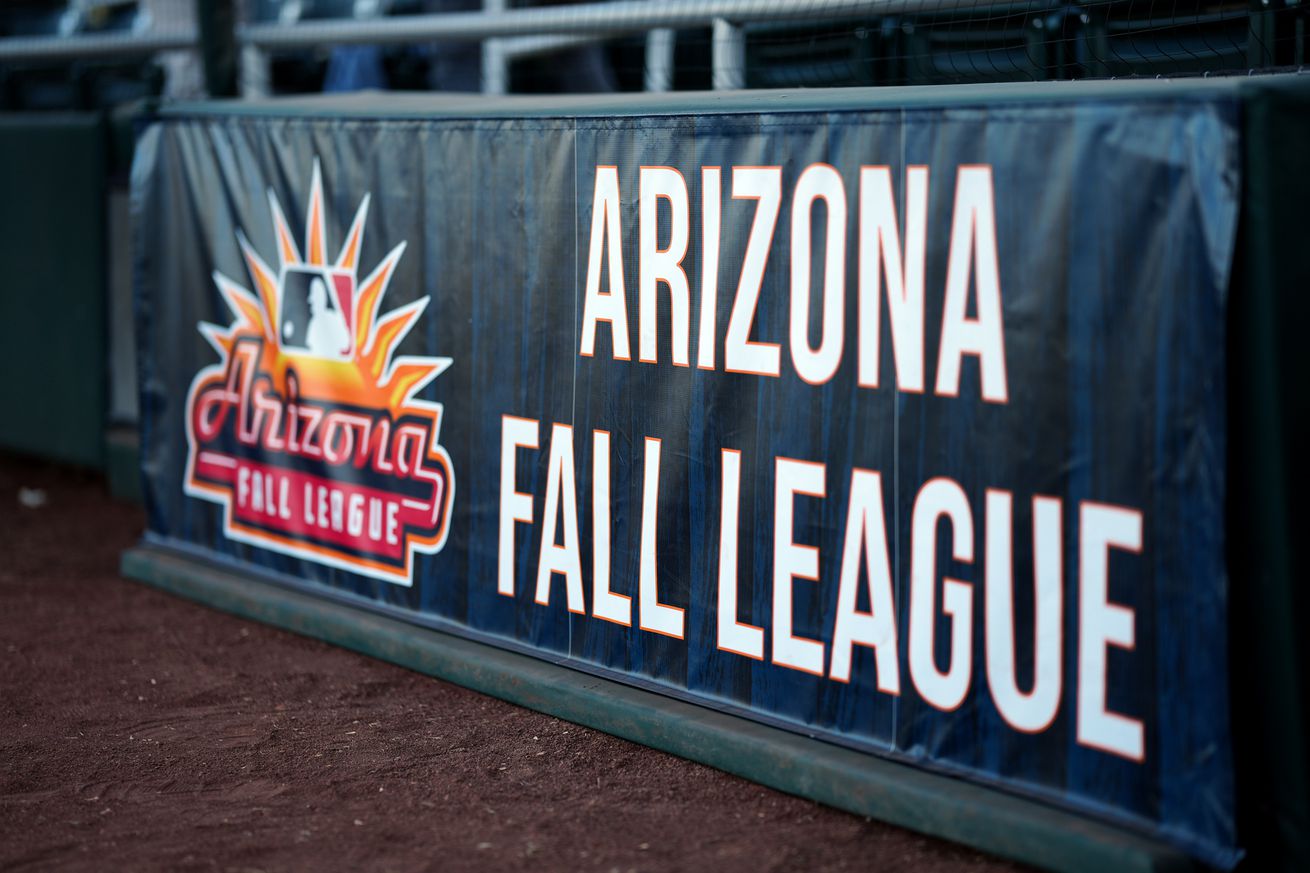
Plus, an All-Affiliate Team
October 7 will mark the opening of the 32nd season (if my math is correct) of the Arizona Fall League. The first-ever game in the league was played on October 6, 1992, and of course the 2020 season was cancelled for some reason or another. For those unfamiliar, the six-team league features players from each of the major league organizations. The Surprise Saguaros (composed of players from the Royals, Guardians, Orioles, and Astros) are the defending champions, which perhaps shouldn’t be surprising as all four of those teams have enjoyed tremendous on-field success this year. Generally, players will ask top prospects to participate, and participating pitchers are often those who need to build up innings from an in-season injury.
As always, the Diamondbacks have sent players to the Salt River Rafters, along with the Rockies, Twins, Yankees, and Nationals. In addition to the players, the Diamondbacks are supplying the pitching coach: Gaby Hernandez, coming off a season in Hillsboro where his pitching staff was excellent.
He’ll get to work with some of the same players. Three of the four pitchers the Diamondbacks have on the roster worked with Hernandez in Hillsboro, some more than others.
Pitchers
Philip Abner, LHP: Abner missed basically the first two months of the season with an injury, beginning a rehab assignment at the Complex on May 31st. He was lights-out for Visalia, allowing six hits and three walks in 17 innings, while striking out 25. He found missing bats more difficult in Hillsboro, where he struck out just ten in 14.1 innings, and he also saw his BABIP against rises almost 200 points. This seems an aggressive placement for the 2023 sixth-round pick from Florida, but he shows all the signs of being a quick mover. He has a good chance to start next season at Amarillo, which is where Andrew Saalfrank began his 2023 that ended with him pitching in the World Series.
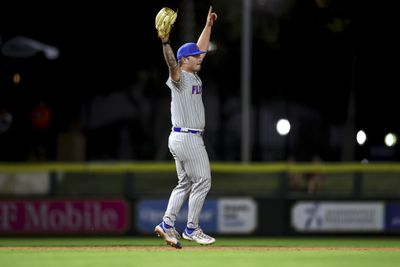
Photo by James Gilbert/Getty Images
Abner throws a fastball in the low-mid 90s and his breaking stuff has shown progress since joining the organization. He was a high-strikeout guy in college as well, so how well he misses bats might give an indication of how quickly he might progress in 2025.
Kyle Amendt, RHP: Amendt did not miss time, but he was used sparingly by Reno down the stretch. He was also drafted in 2023, three rounds after Abner and out of Dallas Baptist. He started the year in Hillsboro and struck out more than 2 batters an inning while allowing just two runs, one earned. That got him promoted to Amarillo, where he was also excellent, and actually had better batted ball luck which meant that he allowed eight hits at both Hillsboro and Amarillo, despite 5.1 more innings at the latter. He did walk more batters, however.
At Reno, though, he ran into trouble. He was still missing bats (he struck out 18 in 12 innings) but batters were also showing better patience (he walked 14) which led to a 5.25 ERA in Reno, compared to a sub-3 ERA in Amarillo and a sub-1 ERA in Hillsboro.
Amendt throws a fastball that registers as a cutter most of the time, and two different breaking pitches. Both have close to 12-6 break; Statcast codes one as a slider sometimes and a cutter other times (which leads to average velocity errors in his statistics) and the other as a curveball. The slower curve is in the high-70s and has a ton of vertical break. The pitch that codes as a slider sometimes and a cutter other times has less vertical break and is in the mid-80s; neither have much in the way of horizontal break. His fastball/cutter peaks around 91-92 and sits around 90; not normally what you want for a bullpen arm. However, he works from an unusual delivery and over-the-top release that provides hitters something different to work with. There’s a certain similarity to Josh Collmenter, but Amendt’s delivery is even more over-the-top (if possible) and a bit more jerky. He’s good at releasing his pitches from the same point, so there is something here in the way of bullpen depth, although he is unlikely to be either a ground-ball artist or a closer.
Yu-Min Lin, LHP: I think we are all familiar with Lin, who is the rare starter appearing in the AFL, thanks to his missing time due to facial injury. He threw just 104.1 innings this season, when the goal was probably around 140. It’ll be good to see him in the AFL, particularly as he took a step backwards in results this year at Amarillo, if not in terms of stuff.
Alfred Morillo, RHP: Morillo spent the entire year at Hillsboro, pitching 37.1 innings in which he allowed just 19 hits. Unfortunately, he allowed 21 walks as well. But he struck out 45. He pitched 48 innings last season, so I expect the Diamondbacks want him to get close to that number again. His strikeout-to-walk ratio actually improved.
Morillo works in the mid-90s with his fastball and the mid-80s with his slider. When he is controlling both pitches, he is nearly unhittable and gets a lot of strikeouts. When he is not, he’s still unhittable, but he is instead walking batters. We might Morillo make the most appearances of any of these pitchers, although expect Lin to throw the most innings.
Position Players
Gino Groover, IF: Groover had his year interrupted almost before it began, breaking his wrist on a collision at first base. It was almost three months before he began a rehab assignment, and more than three months before he returned to Hillsboro. But when he got back, he picked up right where he left off, being one of the best bats on the team. In his final four games at the level, he went 7-for-15 with four home runs, two walks, and only one strikeout. He got promoted to Amarillo and was even better, going 9-for-17 in his first four games there, with one home run and no strikeouts. He slowed a bit after that, not getting hits in his next two games, but he ended the season on a seven-game hitting streak and posted a 178 wRC+ in his limited AA action.
The AFL provides the next test. Can he continue to demonstrate his bat-to-ball skills, and show a bit of power? He was regarded as having decent power, but prior to the last series of August, had hit just four home runs in his professional career. Similarly, he wasn’t hitting for extra bases for most of the year; he had just four doubles and three home runs prior to August 20th.
But an even more interesting question is where he plays the field during the AFL. Widely regarded as a future first baseman, after his injury he apparently made three appearances there during his rehab assignment, but he never appeared there again. With Amarillo, he made seven starts at second base and six at third base. However, the other seven infielders on the roster include just two corner infielders, and out of all the infielders, only Skyler Messinger and Ben Ross have experience at first base. If there is an intention for Groover to return to first, he will likely appear there in the AFL.
Tommy Troy, 2B/SS: Troy was one of approximately 92,000 Diamondbacks who missed time due to hamstring injuries in 2024. (OK, that number is slightly exaggerated, but it seemed that way sometimes.) When he was healthy, he struggled. He’d hit well in 99 plate appearances at Hillsboro in 2023, but saw a slugging percentage 100 points lower in 2024, leading to a wRC+ of 91. That’s acceptable for an incredible defender, but Troy committed 16 errors in 392 innings at shortstop, and was moved to second base, where he committed just one error in 105 innings. He was primarily a second baseman in college and played all of two games at shortstop while at Stanford; Orioles’ farmhand Adam Crampton was the shortstop there. It seemed a long-shot for him to stick at shortstop, and his bat has not developed in a way that would make one think he could stick at third, but it will be interesting to see where he plays in the AFL.
Kristian Robinson, OF: This is likely the last chance for Robinson. While he’s not yet a free agent (although he would be if he had played the seasons he missed) he’ll be 24 this winter. The one-time top-100 prospect showed some promising signs in the Texas League playoffs last winter, and the fact that he was, by some measures, a well-above-average bat at three different levels in his first season back, there was some optimism. OK, primarily from me, but he was in MLB Pipeline’s top-30.
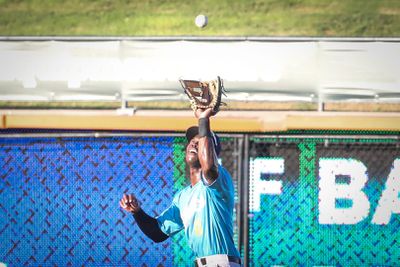
Angela Piazza/Caller-Times / USA TODAY NETWORK
His season featured some good and bad, but the bad was mostly what was noticed, so that should be mentioned first: he struck out 35.8% of the time, and, despite playing in the Texas League, had an ISO of just .137. He hit the ball on the ground far too often (49.5% of the time) and was extremely pull-heavy. Once a center fielder, he’s now limited to a corner, and he’s not great there. On the other hand, he walked 15% of the time, the main reason why he was able to reach a wRC+ of 100 (exactly average) despite batting .214 without a ton of power. His numbers were as bad as they were because of a terrible May and June; in July-September he slashed .246/.364/.429. If you squint, you can see some signs of progress.
Still, minor league rosters are smaller than ever before. Robinson might well find himself expendable. It’s a sad story, a side-effect of the pandemic. Multiple people who know him have said that the actions that kept him away from the game were entirely out of character. He was a 19-year-old, stuck with nothing to do and away from his family in a foreign country. (Not to excuse punching a police officer, or anyone for that matter, but he was clearly not in his right mind at the time.) Had he not missed three years of development as a result, he might well be a regular starter at the major league level at this point. There’s still a tiny sliver of hope that he might turn into more than a “what might have been?” but it’s shrinking by the day. A great (or even just solid) performance in the AFL would go a long way towards more optimism with regard to his future.
All-Affiliate Team
Given the impossibility of watching games at the complexes, this is only composed of players at the full-season affiliates, and players who ended the season still a part of the organization. Thus, Deyvison De Los Santos, Andrew Pintar, and Andrés Chaparro are all ineligible, according to the criteria I just created. However, if they were eligible, all three of them would have a spot.
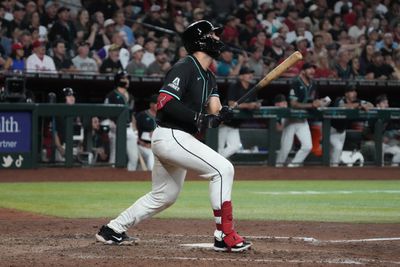
Rick Scuteri-Imagn Images
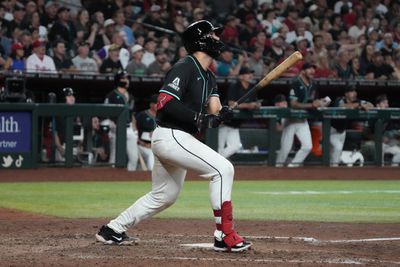
Rick Scuteri-Imagn Images
C: Adrian Del Castillo (.312/.399/.603, 36 doubles, 26 home runs)
Those numbers are only at Reno; we all remember that ADC added four home runs and five doubles as he posted a 146 wRC+ in the big leagues. And he was the Pacific Coast League MVP.
1B: Ivan Melendez (.238/.312/.434, 22 home runs)
Obviously, this spot would have belonged to Deyvison De Los Santos, and I considered giving it to Tim Tawa, who made 33 starts at first base. But it’s Melendez, who did cut his strikeouts (slightly) and increase his walks (even more slightly) but saw his other numbers take a step back. However, the Texas League as a whole took a step back offensively, so Melendez still posted a 110 wRC+.
2B: Demetrio Crisantes (.341/.429/.492, 55 walks, 30 stolen bases)
The numbers are combined between the complex and Visalia. But he put up nearly identical numbers between the spots, particularly in terms of on-base percentage. In terms of wRC+, he was at 141 at the complex and 145 in Visalia. He walked 12.9% of the time at Visalia. And he’s got an active 57 game on-base streak, which he’s managed to keep alive despite posting worse numbers across the board, albeit slightly, during the streak. He also got on base in both playoff games.
3B: Gino Groover (.281/.367/.474)
Since I wrote about Groover above, I’m not going to rehash that here.
SS: Cristofer Torin (.255/.381/.344, 81 walks, 84 strikeouts)
I want to compare Torin to Luis Arraez, and both are contact hitters with little pop, with similar strikeout-to-walk ratios. Both hit four home runs this season. Arraez has the edge on wRC+, but it’s just 108 to 105. Arraez, of course, has never posted a full-season average below .294, and that was as a rookie in the major leagues, so he’s clearly the better hitter. But here’s another difference: Arraez, in 1594 minor league plate appearances, drew 123 walks. Torin, in 996 plate appearances, has drawn 153 walks. That’s thirty more walks in almost 498 fewer plate appearances. For another reference, Eddie Yost (nicknamed “The Walking Man”) first drew more walks than Torin did this season in his second full season, at 21. And in 130 more plate appearances than Torin had. He doesn’t draw as many walks as power hitters, but this is an interesting skill, and it will be fascinating to watch his development.
LF: A.J. Vukovich (.270/.340/.454, 17 home runs)
Vukovich is the perfect example of the change in the offensive environment in the Texas League this year. His slugging percentage dropped 27 points and his on-base percentage increased just 11 points, but his wRC+ jumped from 111 to 123. The one-time hopeful third base solution is now a full-time outfielder, and after playing primarily in center last season, moved to the corner this year. He picked up 11 plate appearances at Reno at year’s end, picking up three singles.
CF: Druw Jones (.279/.409/.405, 85 walks, 29 extra base hits, 7 outfield assists)
It was a tale of two seasons for Druw Jones, who was given a day couple of days off at the end of a series in Lake Elsinore in April, largely because he was slashing .171/.271/.268 despite a .438 BABIP, with 26 strikeouts in 49 plate appearances. At the time, he had twice as many strikeouts as he did walks (6) and hits (7) combined.
The turnaround wasn’t exactly instant, but it started then. For the remainder of the season, despite his BABIP dropping to a still sky-high .400, he slashed .291/.427/.422. He still struck out a lot (106 times in 431 plate appearances) but started drawing walks (81). When it was all said and done, he walked in 18% of plate appearances, and posted a 125 wRC+. There are still concerns (he doesn’t elevate the ball enough and rarely pulls the ball, which prevents him from tapping into what could be considerable power) but it was an encouraging sign of progress, as was his staying healthy all season. Oh, and he plays center field at basically a major league level now, so he doesn’t need a ton of bat to make it, although he does to live up to the hype when he was selected.
RF: Gavin Conticello (.280/.343/.431, 49 extra base hits, 20 stolen bases, 14 outfield assists)
Conticello impressed as much in the field as he did at the plate, demonstrating more athletic ability than expected and playing a solid center field after Andrew Pintar was traded. He turned 21 in June, has already seen action in AA, and looks like he could blossom into a well-rounded, everyday player.
UT: Tim Tawa (.279/.349/.519, 67 extra base hits, 7 positions played)
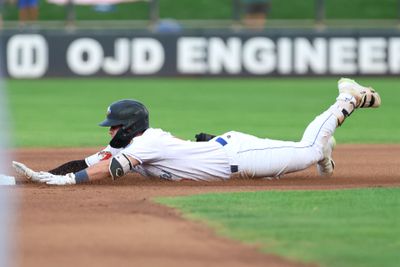
Carter Pirtle for the Amarillo Globe-News / USA TODAY NETWORK
Tawa had such a good season I considered him for the first base spot, then decided to just include a utility player to get him on the team. He made starts at every position except pitcher and catcher, which means he started at eight positions if you count DH. He had a 131 wRC+ at Amarillo and that went up to 139 in Reno despite his struggles there to start the season. He hits the ball hard. The one-time teammate of Tommy Troy at Stanford hasn’t really been considered a part of the future major league plans, but he’s forced himself into that picture. Depending on how the winter and spring play out, he might challenge for a roster spot as a utility player next year.
SP: Yilber Diaz (104.1 IP, 140 strikeouts, 1.265 WHIP, 3.80 ERA)
Those numbers came in two of the least pitching-friendly environments: Amarillo and Reno. He managed to post an almost identical 3.81 ERA in seven major league appearances, four of them starts. No one had Diaz making his major league debut in 2024, but he did it, and he showed signs of being a part of the rotation, although in the past he’s been regarded as a probable bullpen piece.
RP: Kyle Amendt (44 IP, 75 strikeouts, 1.182 WHIP, 2.86 ERA)
As with Groover, I wrote about Amendt above, so the only thing I’ll add here is that he’s from Pleasantville, Iowa. I’m not sure you can get more mid-century Americana than a baseball player from a Midwest town named Pleasantville.
What’s Next?
Apart from the Arizona Fall League, there will be some continued coverage of other aspects of minor league baseball in this space. I hope to be able to bring more stories like I did in March, but proved difficult to set up during the season, when players and personnel are quite busy. There are quite literally hundreds of stories, most of which are never going to be told, but hopefully I can scratch the surface. I’m sure there won’t be a story per week, though.
We’ll also have the first ever Snakepit minor league awards, which will be revealed at some point during the offseason.
For the meantime, go whoever is playing the Mets and the Dodgers!
